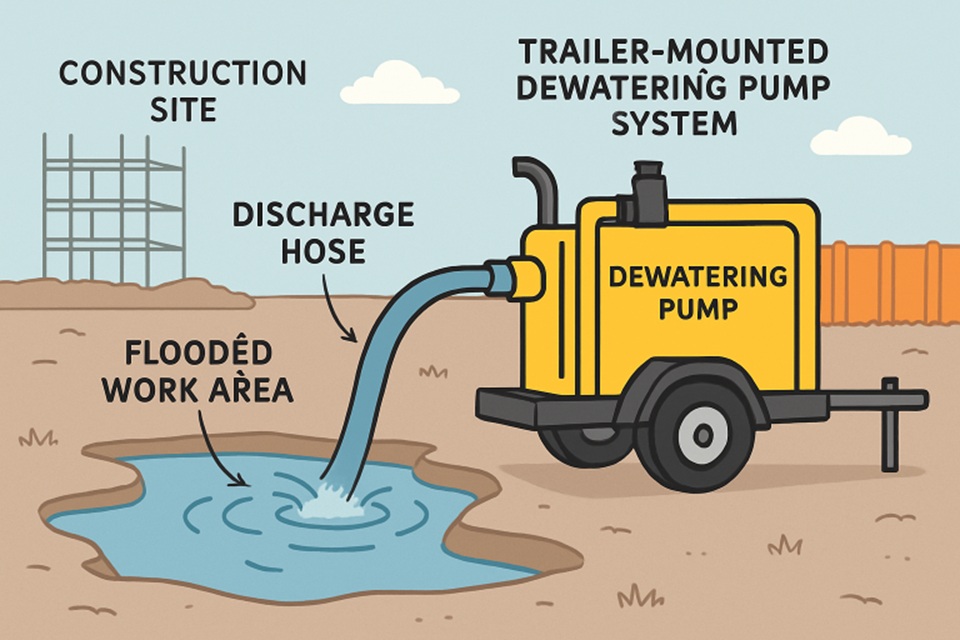Key Takeaways:
- Mini dredges are portable, affordable, and ideal for small- to mid-scale projects.
- They provide effective sediment removal for ponds, marinas, golf courses, and stormwater basins.
- Benefits include reduced cost, easier operation, and less ecological disruption than larger dredging equipment.
- Safety precautions, permits, and choosing the right machine are critical before starting a project.
- Emerging eco-friendly designs and automation are expanding their applications in residential and municipal settings.
Overview Of Trailer-Mounted Dewatering Systems
Trailer-mounted dewatering systems are essential tools designed to rapidly and efficiently remove water from worksites, making them indispensable for construction, mining, public works, and environmental remediation. These portable units typically comprise robust pumps, filtration units, control panels, and necessary support infrastructure—all securely mounted on a mobile trailer chassis for easy transport. By enabling teams to respond quickly to changing site conditions, trailer-mounted dewatering solutions keep projects on track, even in the face of adverse weather or unexpected water encounters.
Trailer-mounted dewatering equipment stands out compared to stationary systems due to its rapid deployment capability and ease of setup. For organizations seeking a streamlined approach, mechanical dewatering services offer a turnkey route to efficient water management without heavy investment in owned equipment.
Key Benefits Of Mobile Dewatering Units
- Portability and rapid deployment: These systems are easily transported and quickly activated, helping contractors tackle unexpected flooding or control groundwater without logistical delays.
- Reduced setup time and lower labor costs: Pre-assembled trailers minimize on-site assembly, freeing skilled labor for higher-value tasks and shortening project timelines.
- Environmental and safety improvements: Modern units include advanced filtration and containment features, reducing the risk of contaminated discharge and minimizing workforce exposure to standing water or hazardous conditions. Well-designed systems help contractors comply with environmental guidelines, such as the EPA’s stormwater discharge regulations for construction sites.
Crucial Features For Efficiency
Pump Size & Flow Rate Recommendations
Selecting the appropriate pump size and flow rate is critical for project efficiency. Common units on trailers range from high-flow centrifugal pumps for large-scale dewatering to smaller submersible pumps optimized for confined or delicate environments. Engineers must match pump performance to anticipated water volumes and drawdown rates—consulting equipment vendors for guidance can prevent costly underperformance or unnecessary oversizing.
Filtration & Monitoring Options
Modern trailer-mounted systems increasingly offer modular filtration options, such as bag filters or sediment tanks, making adapting to local water quality regulations easier. Integrated monitoring technologies allow real-time flow, turbidity, and system performance tracking, streamlining compliance reporting and promoting proactive maintenance.
Adaptability To Variable Site Conditions
Environments and climates can change rapidly on today’s worksites. Advanced trailers are engineered to operate across a wide spectrum of soil types, surface grades, and temperature extremes, and their robust construction resists corrosion and mechanical wear.
Final Thoughts
Mini dredges have transformed small-scale sediment removal approaches—offering a practical, flexible, and eco-conscious solution. Whether you’re maintaining a residential pond, clearing a marina, or restoring an ecological site, these machines deliver efficiency without the high costs of conventional dredging. Property managers, homeowners, and municipalities can now access professional-grade results on demand with rental options widely available. You can ensure successful outcomes while protecting your budget and the surrounding environment by weighing your project’s needs, securing the proper permits, and selecting the right equipment.



